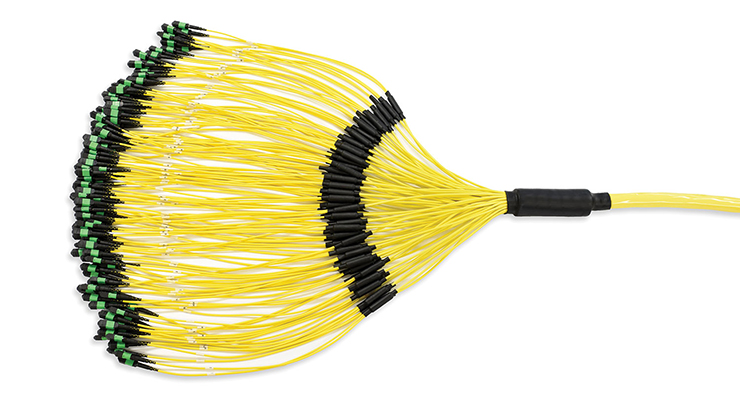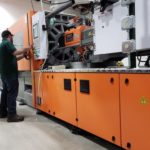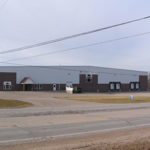NAI has introduced a series of new fiber optic cable harnesses designed specifically for hyperscale computing in data centers.
 The fiber optic cables are pre-terminated at one end with LC or MPO connectors, although customers can specify any fiber optic connector. The harness is then spooled onto a crate reel at customer-specified lengths. NAI recommends a minimum length of 50 ft, and the length limit is generally defined by the reel dimensions needed for safe handling and transportation.
The fiber optic cables are pre-terminated at one end with LC or MPO connectors, although customers can specify any fiber optic connector. The harness is then spooled onto a crate reel at customer-specified lengths. NAI recommends a minimum length of 50 ft, and the length limit is generally defined by the reel dimensions needed for safe handling and transportation.
The pre-terminated end solution reduces field terminations and eases installation, especially in cramped data centers.
NAI currently offers the following assemblies and fiber counts:
- 288F – 288 fibers
- 576F – 576 fibers
- 1,728F – 1,728 fibers
- 3,546F – 3,456 fibers (most recent capability added)
The pliable single mode ribbon cable is OFNR Riser rated and ideal for high density space requirements. A flame-retardant PVC sheath provides a rugged, yet flexible, cable for indoor riser applications. The UV acrylate coated fibers are color coded per TIA-359 and TIA-598. Each fiber ribbon consists of 12 primary fibers aligned in parallel. The ribbon is intermittently separated for pliability. All ribbons are placed in a single, non-filled, flame retardant PVC buffer tube. A cable sheath covers the buffer tube and consists of a layer of fiberglass yarns and a layer of rigid FRP strength elements for tensile strength required for installation and service loads. The PVC jacket is colored yellow for Single Mode designation.
Hyperscale computing is an architecture that can expand and contract as needed by a business operation. The system is therefore highly scalable, which is seamless to the user. A hyperscale computing operation is a robust system with flexible memory, networking and storage capabilities. Where older data center architecture limited to capabilities of the computer operation and network, a hyperscale system utilizes hundreds of thousands of servers that operate together in a high-speed environment. Cloud-based servers are key to this type of architecture.
Data centers can now use public clouds and multiclouds to enable a hyperscale architecture, instead of private servers or private clouds. Security devices and technology have advanced, allowing businesses to broaden their cloud computing base.
The form factors of hyperscale data centers are designed to optimize performance and reduce costs. This requires small and densely packaged servers. The interconnect requirements of these servers require similar high-density and small size. NAI has engineered special cable assembly solutions to accommodate this application in data centers.







Leave a Reply
You must be logged in to post a comment.